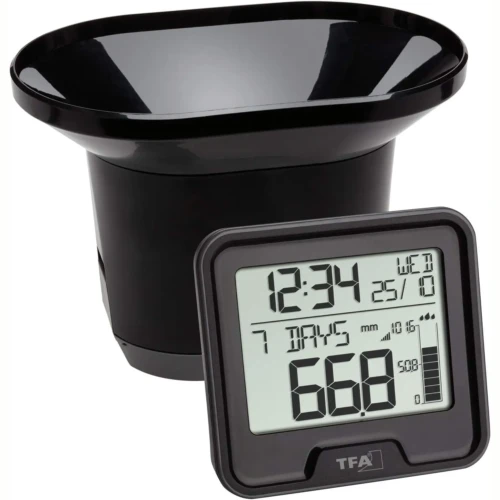Digital and wireless rain gauges typically feature a self-emptying “tipping bucket” collection system. This uses two small “buckets” mounted on a fulcrum (balanced like a see-saw).
The tiny buckets are manufactured with tight tolerances to ensure that they hold an exact amount of precipitation, typically .2mm. The tipping bucket assembly is located underneath the rain collector, which funnels the precipitation to the buckets.
As rainfall fills the tiny bucket, it becomes overbalanced and tips down, emptying itself as the other bucket pivots into place for the next reading. The action of each tipping event triggers a small switch that activates the electronic circuitry to transmit the count to the digital display. On a wireless rain gauge, that count is transmitted via a radio signal.





